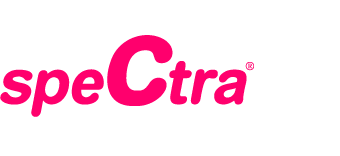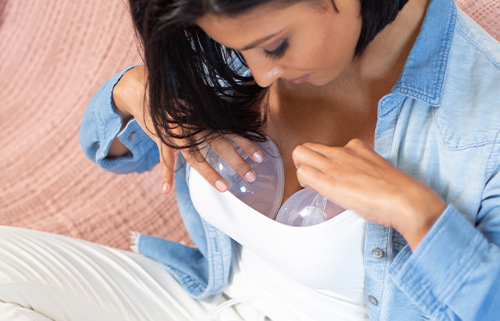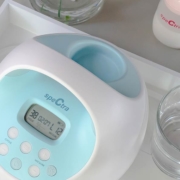Tips to Manage Nipple Pain
Melissa Portunato MPH, IBCLC, RLC
Nipple soreness in the first few weeks postpartum is normal as you navigate breastfeeding, but wanting to cry every time you turn on the pump or latch your baby is NOT normal. Painful nipples can be caused by challenges with latching baby at the breast, incorrect flange sizing, or even just pumping on too high of a vacuum setting. Read on to learn our top tips for managing nipple pain during your breastfeeding journey.
Latch
You’ve probably heard about “THE LATCH” and its importance to your breastfeeding success. The short answer is yes, the latch is everything when nursing at the breast. A proper latch will ensure your baby is nutritively sucking at the breast, which is needed for your baby’s healthy growth and development – your nipples will thank you too! Also, a proper latch will NOT be painful. You will always feel tugging or pulling when pumping or nursing but not pain. If you are working on getting a better latch, try the “laid back breastfeeding’” position. A hangry baby will be much more difficult to latch and will likely not latch. Practice every feeding starting with skin to skin and in between feeds when your baby is calm and alert. Pump with a hospital-grade breast pump if baby is not nursing well or draining the breast to maintain an optimal milk supply.
Lubricate
You can treat sore nipples with your very own breast milk! Studies show the antibacterial properties of breastmilk make it the perfect substance to heal nipples and keep them healthy. Hand express breast milk on your nipples after every feeding and allow them to air dry. Combining breastmilk with a cool hydrogel will get your nipples feeling better in no time!
Lower the Pump Vacuum
If pumping is hurting, try lowering the vacuum. A higher vacuum doesn’t mean more milk. On the contrary, it could be the leading cause of your nipple pain. Depending on your Spectra Breast Pump, you have between 10-15 vacuum levels! That’s a whole lot of suction. You don’t need to work up to high vacuum levels. Moms are surprised that using a medium/low vacuum level can better drain the breast and cause less soreness. Try pumping only on 38 expression mode and set the vacuum to comfort. This setting can help ease nipple pain!
Check Flange Sizing
If your flange is not the correct size, it can cause soreness and issues with milk supply down the road. Measure your nipples before nursing or pumping for an accurate assessment. Keep in mind that you want your flange size to be 2-3mm larger than you measure.
You can use our easy-to-follow breast shield guide to find the perfect fit.
Red Flags, Call the Doctor
Nipple soreness should start to subside about 2-3 weeks postpartum. If you have cuts, cracks, or abrasions on your nipples, you are more susceptible to an infectious form of mastitis. Wash your nipples daily with non-antibacterial soap and allow them to air dry. Make sure you change your breast pads frequently; this will help prevent any infection and allow your nipples to heal faster.
Consult your health care practitioner and a local IBCLC if you have the following symptoms:
- Prolonged nipple pain or tenderness
- Itchy, scaly, or shiny nipples or breasts
- Bright red areas of the breasts and hot to the touch
- Flu-like symptoms that persist for more than 24 hours
Spectra baby USA has a team of IBCLCs ready to assist you with your breastfeeding questions and provide local resources to ensure breastfeeding success!










Leave a Reply
Want to join the discussion?Feel free to contribute!